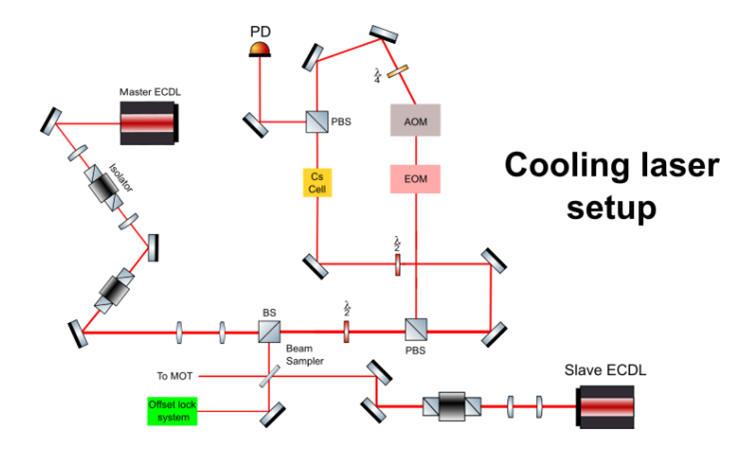1.852 nm system

2. Repumping laser system

3. Magnetic Optical Trap (MOT)

Source: https://www.researchgate.net/figure/conceptual-scheme-of-a-magneto-optical-trap-MOT-and-typical-expansion-of-a-cloud-of_fig4_348383229
4. FPGA and LabVIEW application

5. Future plan
(1) To observe the EIT from two photo translations.
(2) To see the Ramsey fringe for a new way to make an atomic clock with comb laser which can precisely control the pulse interval time and the phase.